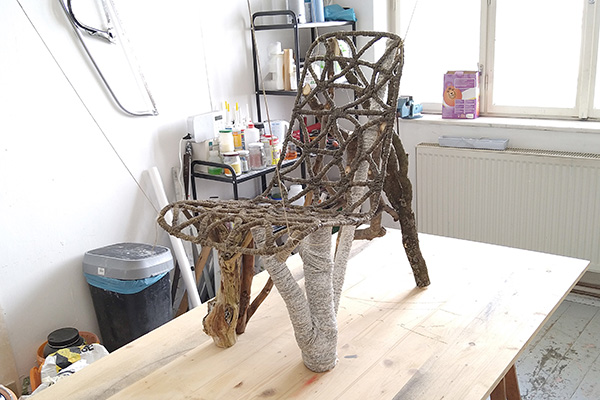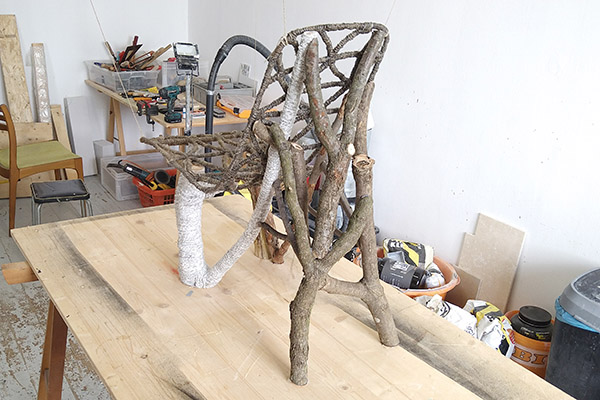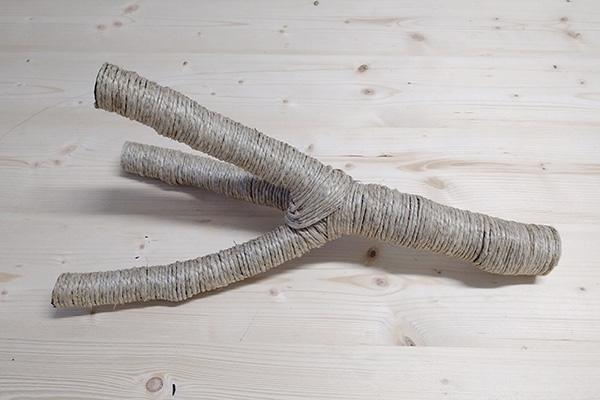Biocomposite Furniture Collection Design Process














Design Process
Biocomposite Furniture Collection Design Process
Philipp Aduatz Unveils Biocomposite Furniture Collection for Milan Design Week 2024
Austrian product designer Philipp Aduatz has launched a new furniture collection that attempts to break from conventional design, incorporating wood, flax fibers, and a biobased epoxy resin as a fiber-reinforced composite material. The collection, which includes a chair, a side table, a coffee table, and a lamp, reflects Aduatz’s dedication to pushing the boundaries of experimental design.
Aduatz’s approach involves combining natural fibers with wood and a partially biobased resin to maximize the use of renewable materials, resulting in a composite material with a minimal carbon footprint. For the chair and tables, Aduatz sourced branches from the forest near his studio in Weidling, Lower Austria, which were then carefully wrapped with flax fibers and infused with dyed resin through an experimental process, resulting in each piece being a unique sculpture.
Over a decade ago, designers were interested in composite materials like carbon fiber reinforced polymers for their technical properties and aesthetic appeal. Recent trends favor environmental considerations, shifting towards natural and renewable fibers like flax, hemp, or sisal, as well as the use of epoxy resins made with an increasing proportion of natural vegetable oils, such as linseed or soybean oil. The combination of a partially biobased epoxy resin with natural fibers results in a versatile and enduring biocomposite material customizable to specific requirements.
Composite materials derived from renewable resources offer various advantages, including lower carbon emissions and energy consumption compared to fully petroleum-based alternatives. The technical attributes of fiber-reinforced composite materials provide a superior strength-to-weight ratio, making them suitable for lightweight applications due to their high strength and stiffness at minimal weight. Aduatz’s use of a thermoset biobased matrix expands creative possibilities, allowing for an experimental process that embraces the material combination, ensuring a long-lasting result.
The underlying concept of this project is to venture into innovative design territories for composite materials, emphasizing a commitment to environmental responsibility through an experimental furniture series. Philipp Aduatz’s biocomposite furniture collection promises to captivate Milan Design Week 2024, embodying a fusion of artistry, innovation, and sustainable design practices.



